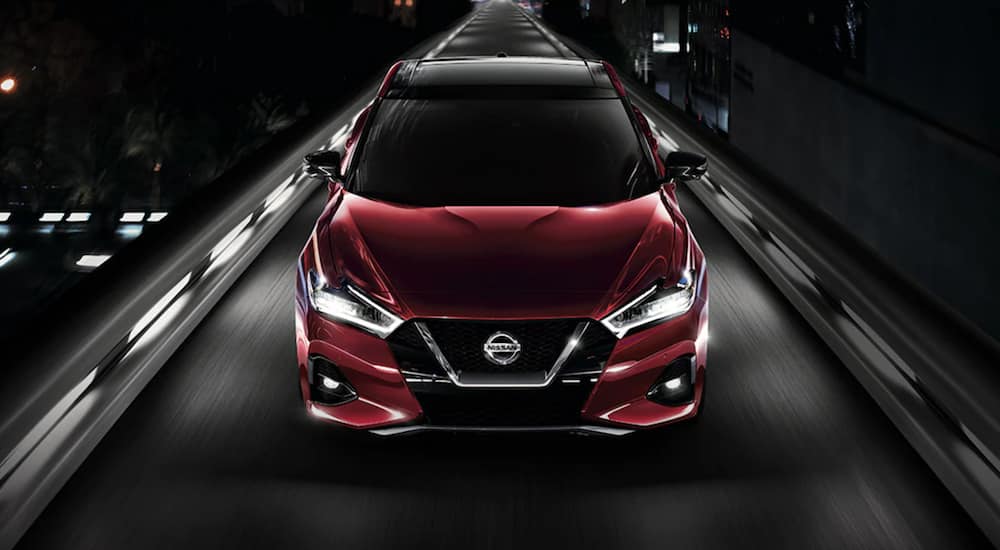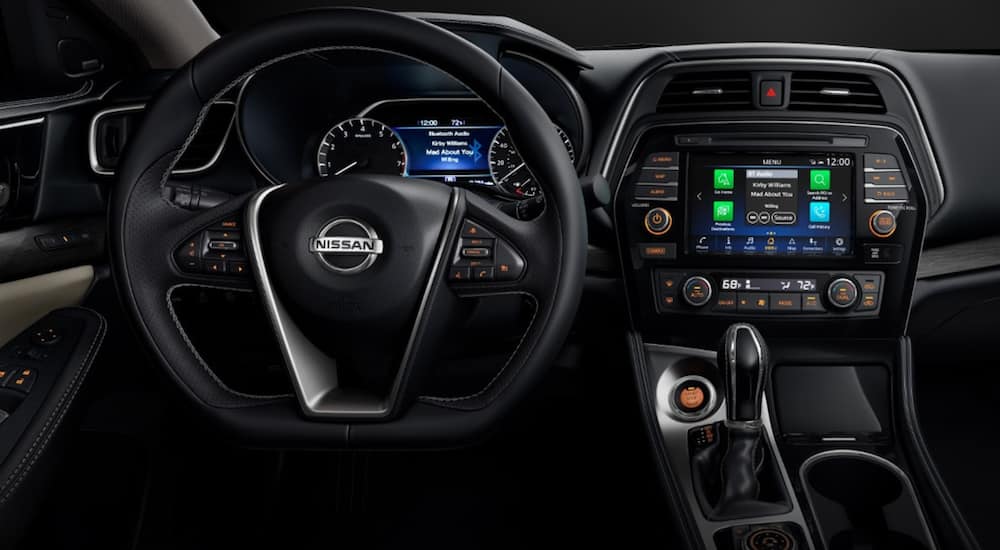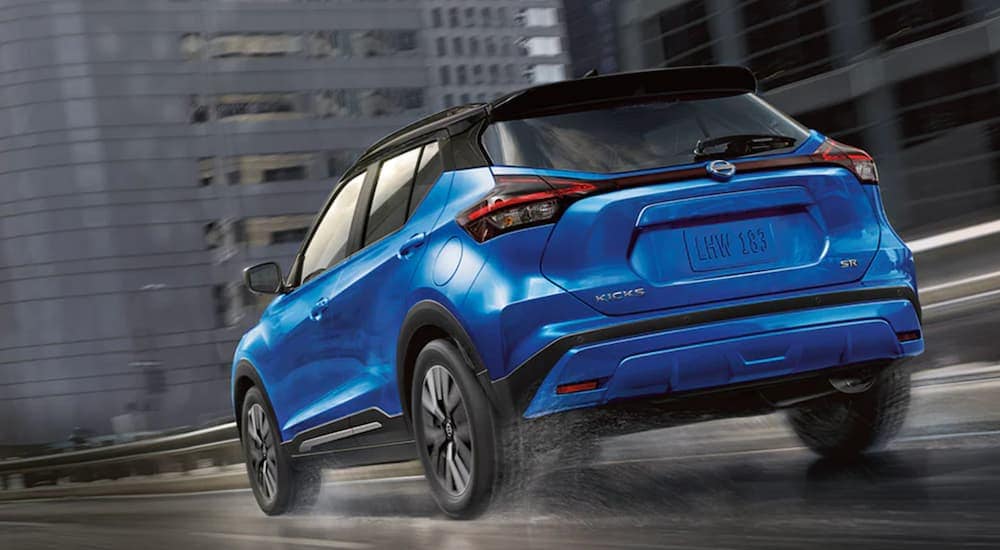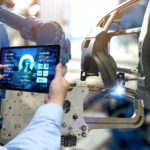If you’re getting ready to visit a Nissan dealership to buy a brand new Nissan for your family, you’ll be glad to know that the newest crop of 2021 Nissan models incorporates a plethora of advanced safety features that utilize next-generation automation technology. One of the most exciting features is ProPILOT Assist 2.0. Perhaps you’ve read about manufacturers testing driverless or semi-autonomous vehicles: prototype concept cars that utilize radar and GPS technology for safe hands-free driving. You may think this technology is about as likely to come available as a Jetsons-era flying car, but in fact, some vehicles in the Nissan lineup offer a version of this system today.
ProPILOT Assist 2.0 is a safety and convenience system that constantly monitors the area around your vehicle and sends alerts when a potentially dangerous change in road conditions occurs. The system acts as an additional safeguard to protect vehicle occupants, essentially creating a radar-powered safety “bubble” around the entire vehicle. The system is classified as semi-autonomous because drivers still need to keep their hands on the wheel and their eyes on the road at all times. ProPILOT Assist 2.0 is designed to act as a buffer, augmenting good driving habits rather than replacing them. Driver-assist technology can be summed up this way: it’s the safety feature you never knew you needed and one that you won’t want to live without.
So how does it work? It’s simpler than you might think, and because it’s completely automated, once you activate the system, it works on its own. Let’s take a deep dive into all the features of Nissan’s ProPILOT Assist 2.0 and how it helps keep you safer.
ProPILOT Assist 2.0: The Basics
If you’ve ever taken a road trip that included long, boring stretches of highway driving, you’ll know that it’s easy for your mind to wander, which sometimes causes you to lose focus. How about lane changes? Do you crane your neck around to check behind you, worried that someone has crept into your blind spot? These are common occurrences that add extra stress to your drive.
ProPILOT Assist 2.0 is designed to help mitigate the potential safety hazards associated with driving too close to the vehicle ahead, drifting out of your lane on a boring drive, or making fearful lane changes. Through a series of alerts, automatic speed adjustments, and – when necessary – gentle steering correction, ProPILOT Assist 2.0 aids good driving habits. And it happens quickly and automatically, with no manual adjustments necessary.
Here’s an example of how it works: let’s say you’re driving on the highway. You set your Intelligent Cruise Control to 65 mph. Just ahead, traffic appears to be slowing. Traditionally, changing speeds would require a manual cruise control adjustment or even braking. Instead, ProPILOT Assist 2.0 does it for you. The system actively monitors the road and continuously adjusts your speed, so you’re always a safe distance from the vehicle ahead.
In addition, ProPILOT Assist 2.0 can read road markers and discern which lane you’re traveling in. Bumper-mounted radar units and a camera located near the rearview mirror work together to scan the road and assess your vehicle’s location. If you start to drift, the system alerts you and delivers gentle steering nudges to get you back to the center of your lane.
ProPILOT Assist 2.0 with Navi-link
The future of navigation involves not only providing accurate turn-by-turn directions but anticipating changes along your route that require a speed adjustment. That’s the strategy behind Nissan’s ProPILOT Assist 2.0 with Navi-link. Safety meets convenience, giving drivers another reason to relax behind the wheel.
Nissan’s Navi-link syncs with the vehicle’s onboard navigation (in vehicles equipped with Nissan’s navigation system) to anticipate tight curves, off-ramps, and speed limit changes, automatically slowing the vehicle down or braking when necessary. It takes the guesswork out of braking and relies on GPS technology to calculate the distance and time required to safely slow down. This feature is called Speed Adjust by Route. In a global press release from Nissan Motor Corporation, the company describes it as “a function that…reduc[es] the frequency of the driver’s operations and mak[es] the driver more confident and more comfortable.” Who doesn’t want to navigate a perilous freeway off-ramp more confidently?
While ProPILOT Assist 2.0 uses the onboard camera and radar to adjust speed, apply the brakes, and deliver gentle steering corrections, Nav-link adds data from the navigation system and reads the road for you. It automatically adjusts speed whenever necessary, such as when you approach a highway off-ramp.
Nissan Intelligent Mobility: The Future of Autonomous Driving
Nissan Motor Corporation sees ProPILOT Assist 2.0 and Navi-link as the first step toward a more connected and automated driving experience. The company is poised to roll out continuous technological advancements, with a sky-is-the-limit goal of building an “ecosystem” of interconnectedness. If you think this all sounds like it belongs in a Sci-Fi movie, you’re half right. The difference is, the technology already exists. Today’s Nissan vehicles are already built with advanced operating systems and software, like ProPILOT Assist 2.0, but tomorrow’s Nissan lineup will expand the concept into even more intelligent onboard systems.
Take, for instance, Nissan’s Seamless Autonomous Mobility (SAM) system. It’s a driverless technology that uses artificial intelligence and a dash of human help to effectively think on the go. The system is capable of making real-time decisions during unpredictable driving conditions. It can also share information with other autonomous vehicles, a capability that will eventually lead to better traffic control and accident avoidance.
These systems also let you stay connected, blurring the line between vehicle and smartphone. Infotainment touchscreens and app-based vehicle management programs are just the beginning. Soon, every vehicle Nissan manufactures will be capable of networking with other vehicles, sharing data, and transforming the driving experience into one that is safer and more efficient.
Add to all this innovation Nissan’s aggressive EV strategy, and it’s a recipe for an automotive revolution, the likes of which we haven’t seen since the launch of the Model-T. Nissan shares an all-electric vision with other major auto manufacturers and is working to help expand the network of fast-charging stations worldwide, so EV ownership is convenient and desirable.
The Future Is Starting Now
Lucky for buyers in 2021, Nissan’s ProPILOT Assist 2.0 is available right now. Whether you’re shopping for a compact Rogue or you’re holding out for the upcoming Ariya EUV, the opportunity to equip your new Nissan with next-generation safety technology is here.
The ProPILOT Assist program was first introduced in 2018 as a way to combat driver fatigue, taking over mundane tasks like adjusting cruise control speed and braking in stop-and-go traffic. Today, the more refined system performs these tasks even more smoothly. Add Navi-link, and you won’t have to estimate when to start slowing down as you approach the freeway exit ramp. The system does it for you.
While these systems are extremely convenient, it’s important to remember that they are not designed to replace good driving habits. We’re still years away from truly driverless technology. In the interim, ProPILOT Assist 2.0 takes the edge off some of the more tedious aspects of driving. For that reason, we say it’s a “nice to have” safety and convenience feature.






